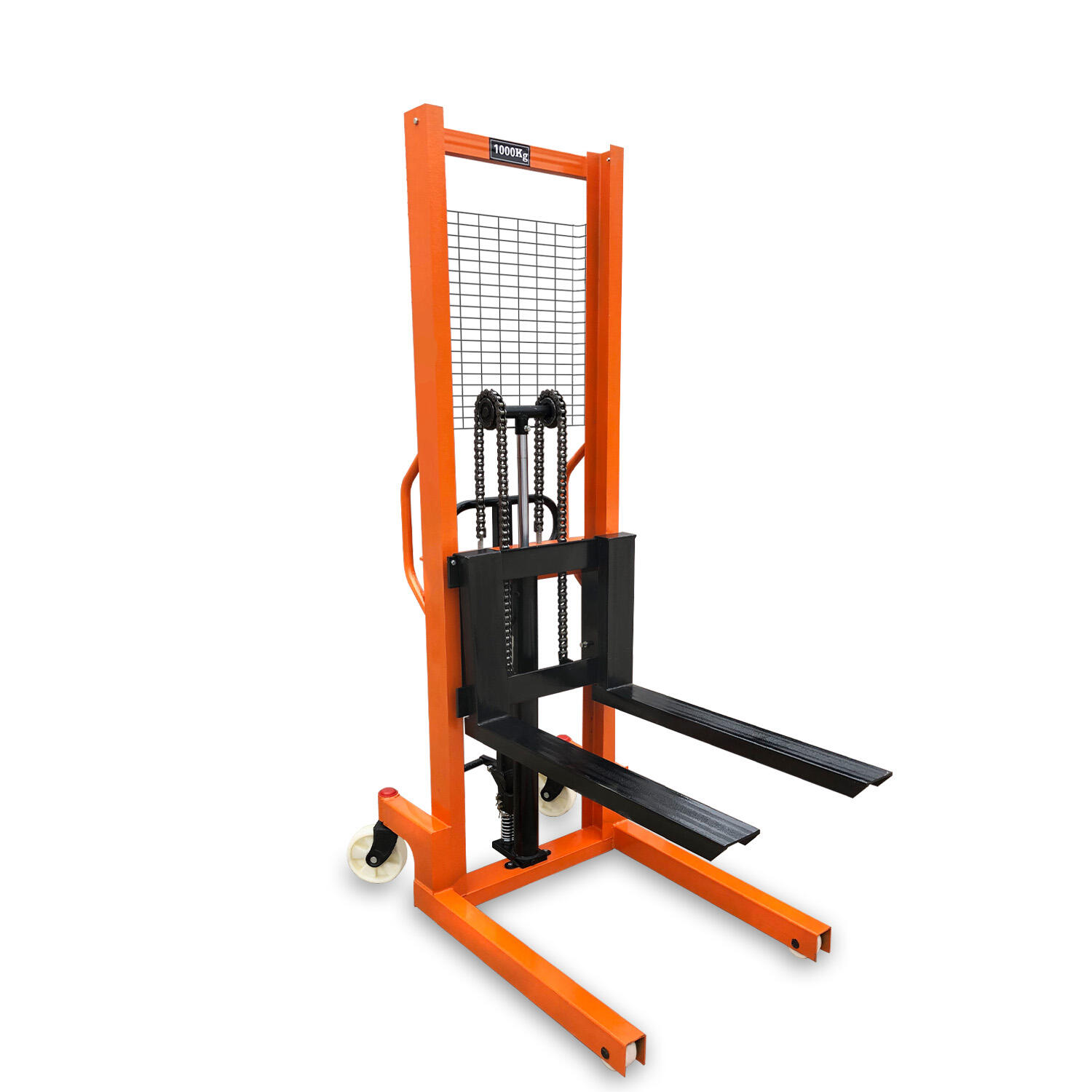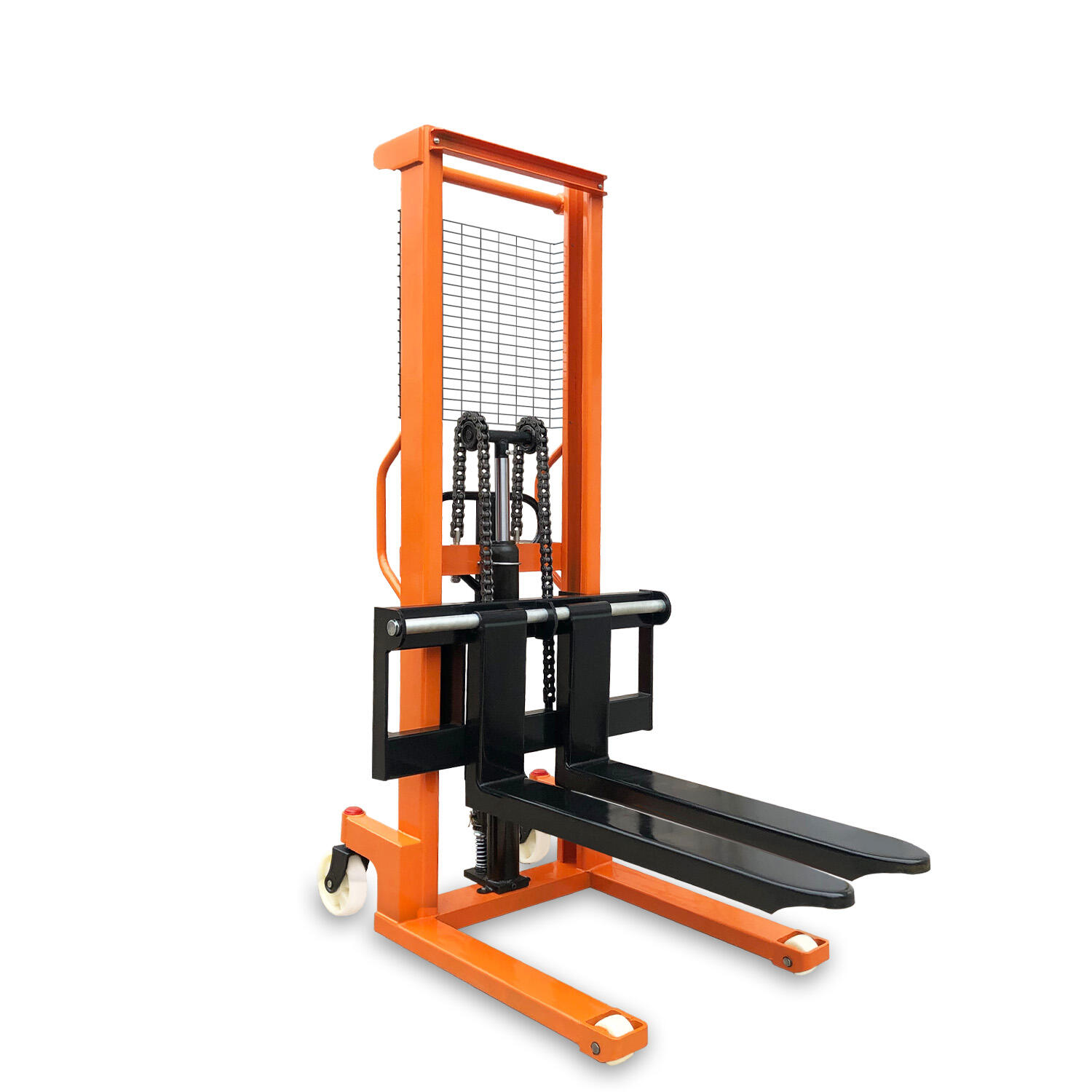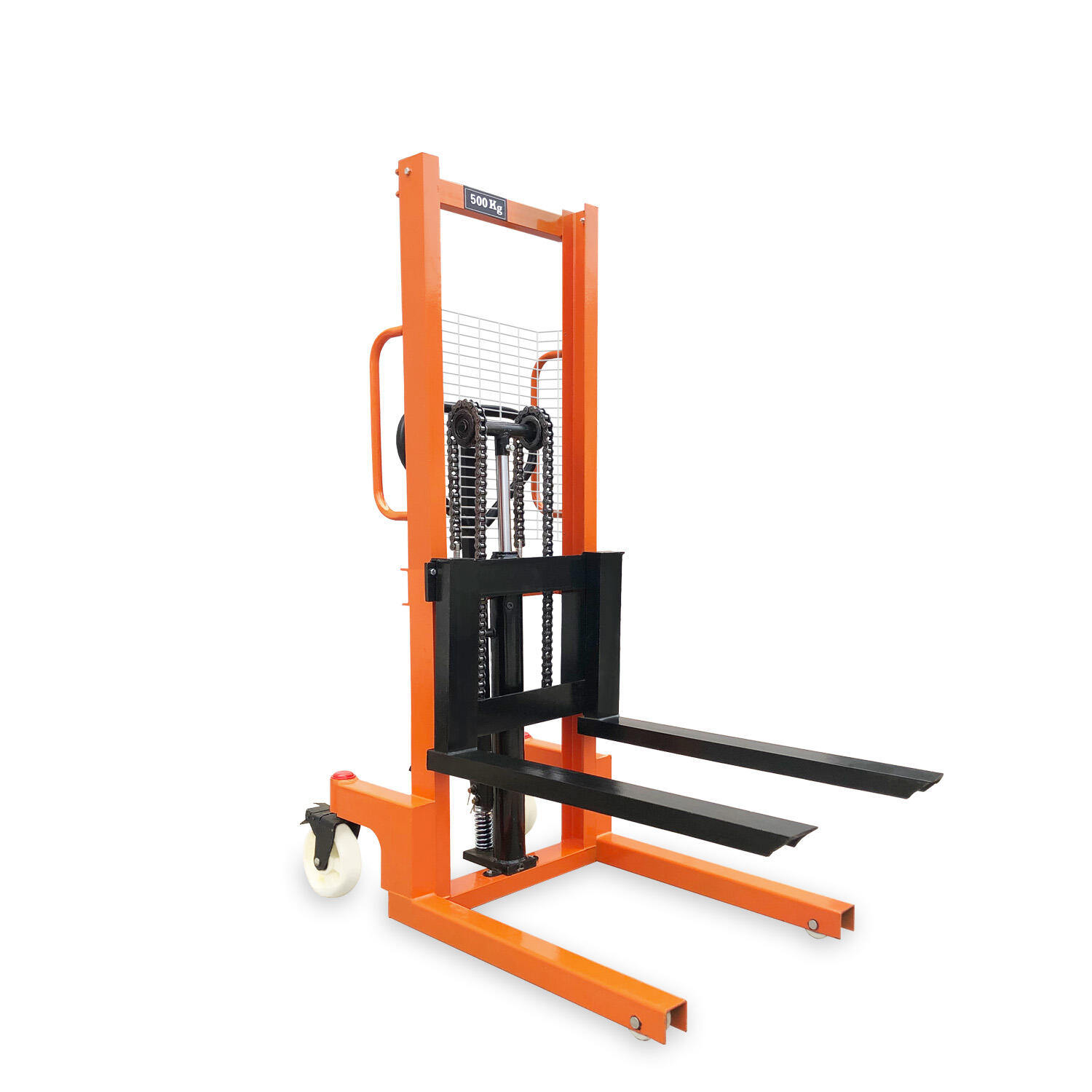A hydraulic manual stacker 2 ton is a powerful and reliable material handling equipment designed to lift and transport loads up to 2 tons, making it an ideal choice for businesses that deal with heavier loads in warehouses, manufacturing facilities, distribution centers, and other industrial environments. This type of stacker combines the efficiency of a hydraulic system with the simplicity of manual operation, offering a cost-effective alternative to electric or fuel-powered stackers while still providing the strength needed to handle substantial weights. Its design focuses on durability, safety, and ease of use, ensuring that operators can perform lifting tasks efficiently with minimal physical strain. One of the key components of a hydraulic manual stacker 2 ton is its hydraulic lifting system, which is responsible for raising and lowering the load. This system consists of a hand pump, a hydraulic cylinder, and hydraulic fluid, working together to convert the operator’s manual pumping action into a powerful lifting force. The hydraulic system is designed to multiply the force applied by the operator, allowing even a single person to lift loads up to 2 tons with relative ease. This eliminates the need for multiple workers to manually lift heavy items, reducing the risk of injuries and increasing productivity. The lifting process is smooth and controlled, ensuring that loads are raised evenly, which is crucial for preventing damage to goods and maintaining stability during transport. The construction of a hydraulic manual stacker 2 ton is built to withstand the stress of lifting and moving 2-ton loads on a regular basis. The frame is typically constructed from high-strength steel, which provides exceptional rigidity and durability to support the heavy weight. Steel is chosen for its ability to resist bending, warping, or breaking under pressure, ensuring that the stacker remains structurally sound over time. The forks, which are the part of the stacker that directly contacts the load, are made from thick, reinforced steel to prevent deformation, even when handling sharp or unevenly distributed loads. Many models also feature a reinforced mast, the vertical structure that supports the lifting mechanism, which is designed to withstand the bending forces exerted when lifting heavy loads to maximum height. Maneuverability is an important feature of the hydraulic manual stacker 2 ton, despite its larger size and higher capacity compared to smaller stackers. It is equipped with high-quality wheels that allow for easy movement, even when loaded to capacity. Most models have two large, fixed rear wheels for stability and two swivel front casters that enable smooth steering and tight turns. This wheel configuration makes it possible to navigate through narrow warehouse aisles, around corners, and into tight spaces such as the back of a truck. The overall weight of the stacker is balanced to ensure that it remains stable during movement, preventing tipping or wobbling that could lead to accidents. Some models also feature a handle that is positioned at a comfortable height, allowing operators to push or pull the stacker with minimal effort. Lifting height is a critical specification for a hydraulic manual stacker 2 ton, as it determines the maximum height to which loads can be raised. Most models offer lifting heights ranging from 1.8 meters to 3.5 meters, which is sufficient for stacking loads on high pallet racks, shelves, or into the upper levels of delivery trucks. The mast design plays a key role in determining the lifting height; some models feature a single-stage mast for lower lifting heights and a more compact design, while others have a two-stage or three-stage mast that allows for higher lifting heights while maintaining a manageable closed height for storage. The choice of lifting height depends on the specific needs of the operation, such as the height of existing storage infrastructure or the requirement to load goods onto tall vehicles. Safety features are integrated into every aspect of the hydraulic manual stacker 2 ton to ensure safe operation. One of the most important safety features is the overload protection valve, which prevents the stacker from lifting loads exceeding the 2-ton capacity. This protects both the equipment from damage and the operator from potential harm caused by overloading. The lowering mechanism is designed to be controlled, with a release valve that allows the operator to lower the load slowly and precisely. This prevents sudden drops that could damage the load or cause the stacker to become unstable. Many models also include a parking brake that locks the wheels in place when the stacker is stationary, ensuring that it does not move during loading or unloading. Additionally, the frame and mast are designed to provide a stable base, with a wide stance that reduces the risk of tipping, even when lifting heavy loads to maximum height. Ergonomics is a key consideration in the design of the hydraulic manual stacker 2 ton, as it helps to reduce operator fatigue and improve productivity. The hand pump handle is typically padded and contoured for a comfortable grip, allowing operators to pump for extended periods without discomfort. The handle is also positioned at a height that minimizes bending or stretching, reducing strain on the back and shoulders. Some models feature an adjustable handle height, enabling operators of different sizes to find the most comfortable position. The overall design of the stacker is intended to make operation as intuitive as possible, with controls that are easy to reach and use, even for operators with minimal training. The hydraulic manual stacker 2 ton is versatile and can be used in a wide range of applications across various industries. In warehouses and distribution centers, it is used to stack pallets of inventory, organize storage areas, and load/unload trucks. In manufacturing facilities, it helps transport raw materials to production lines and move finished products to storage. It is also useful in construction sites for moving heavy materials such as bricks, steel beams, or concrete blocks. In retail settings with large storage areas, it can be used to move heavy items such as appliances, furniture, or bulk merchandise. Its ability to handle 2-ton loads makes it suitable for any operation where medium to heavy lifting is required on a regular basis. Maintenance of a hydraulic manual stacker 2 ton is relatively simple, thanks to its robust design and minimal moving parts. Routine maintenance tasks include checking the hydraulic fluid level and ensuring there are no leaks in the hydraulic system, as proper fluid levels are essential for optimal performance. The hydraulic fluid should be replaced at regular intervals to prevent contamination, which can damage the pump and cylinder. The wheels and casters should be inspected for wear and tear, and lubricated to ensure smooth movement. The forks and frame should be checked for signs of damage, such as cracks or bending, and any issues should be addressed promptly to prevent further damage. The hand pump mechanism should also be lubricated periodically to ensure it operates smoothly. With proper maintenance, a hydraulic manual stacker 2 ton can provide reliable service for many years, making it a cost-effective investment. When choosing a hydraulic manual stacker 2 ton, there are several factors to consider to ensure it meets the specific needs of the operation. The required lifting height is a key consideration, as it must match the height of the storage racks or trucks the stacker will be used with. The width of the forks should be compatible with the pallets or loads being handled; some models offer adjustable forks to accommodate different sizes. The overall dimensions of the stacker should be considered to ensure it can maneuver in the available space, especially in narrow aisles. The reputation of the manufacturer is also important, as reputable brands are more likely to produce high-quality, reliable stackers with good customer support and readily available replacement parts. Price is another factor, but it should be balanced with quality, as a cheaper stacker may not withstand heavy use and could lead to higher maintenance costs over time. In conclusion, a hydraulic manual stacker 2 ton is an essential piece of equipment for businesses that need to handle medium to heavy loads efficiently, safely, and cost-effectively. Its combination of hydraulic power, durable construction, maneuverability, and safety features makes it suitable for a wide range of industrial and commercial applications. By investing in a high-quality hydraulic manual stacker 2 ton and maintaining it properly, businesses can improve productivity, reduce the risk of workplace injuries, and ensure that heavy lifting tasks are performed with ease and precision.


